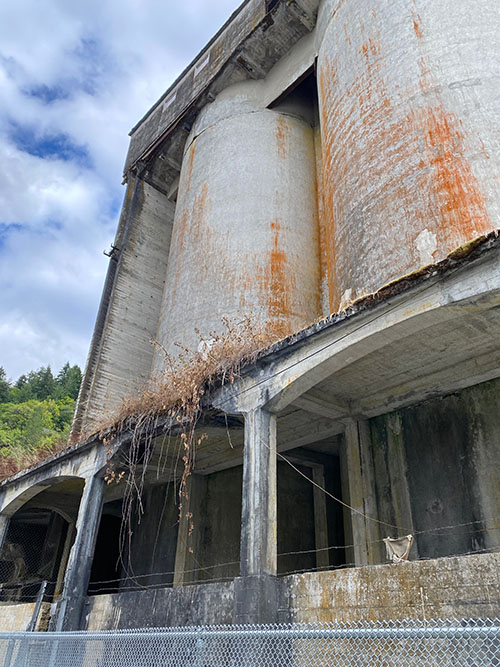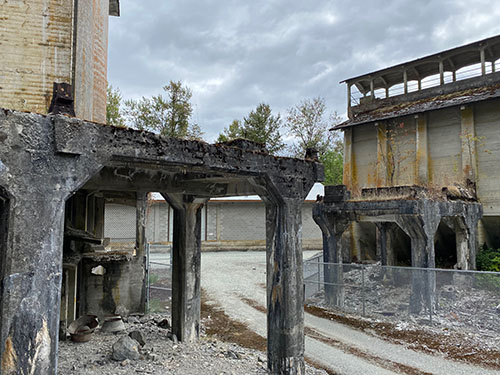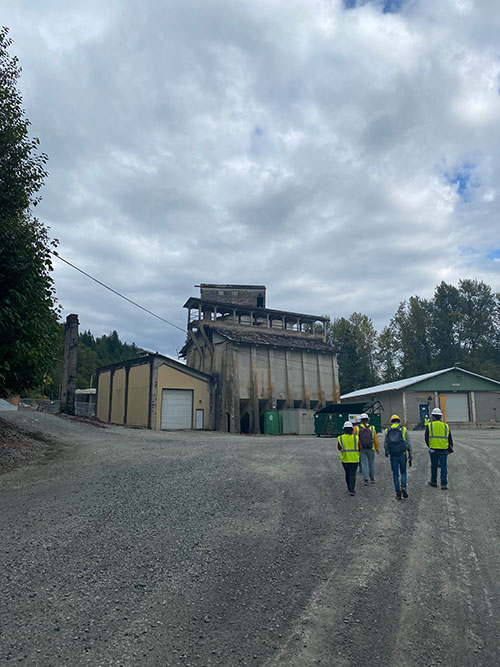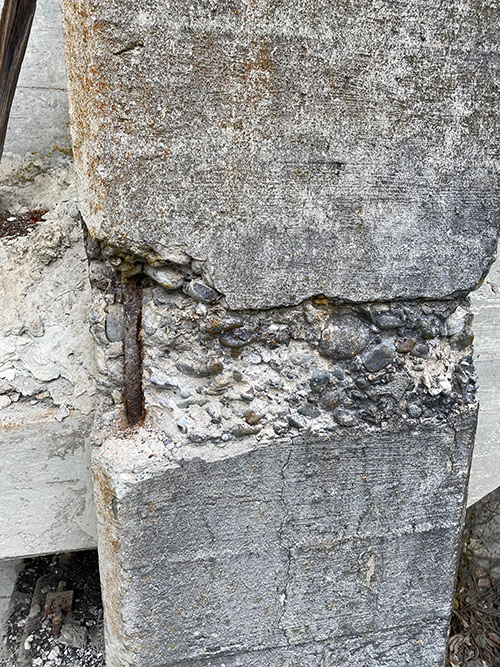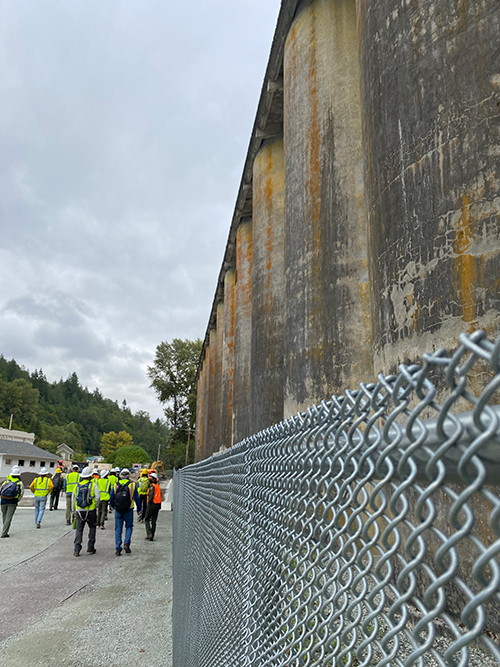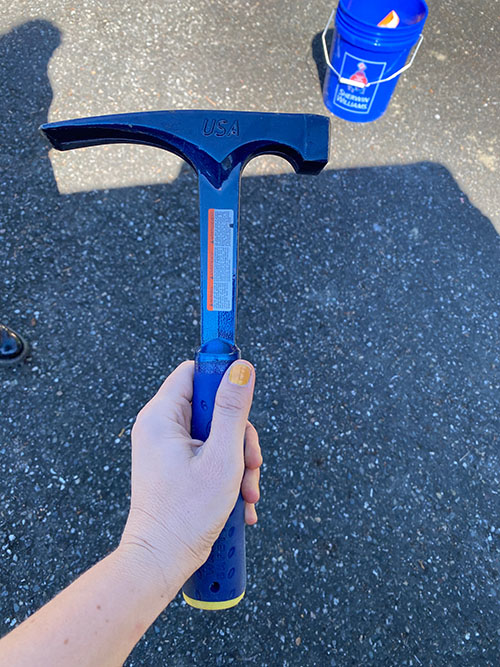By Brittany Hobbs
After five and a half hours coasting north along I-5, I finally veered to the east. Past flat farmland and increasing forest density, I lost cell service about half an hour from my destination: Baker Lake Lodge, near Concrete, Washington. I turned to the Google Map I had printed out, reminiscing about when printed paper maps were the height of technology. My ancient mapping technique served me well, and I managed to find my way to the dusty lodge parking lot without any unintended detours.
I’d been anticipating Field School for over a year, since the beginning of my graduate degree in September 2020. Traditionally, Field School is a right of passage for incoming grad students of The University of Oregon’s Historic Preservation program. But because of Covid, last year’s Field School was cancelled, so the faces that greeted me in the dusty parking lot were all familiar – even if I had only seen them on Zoom. Car after car arrived, some packed with tents and sleeping bags, others with games and beer. By 6pm, we were seated along the folding tables of the Mess Hall – gorging ourselves on pizza, trading stories of our summer internships, and guessing at the activities of the next week. We looked over the names neatly written on chalk boards outside of each room of the lodge. Most we recognized as members of our cohort, but a few perplexed us…for instance, who was Paul?
What we did know was the subject matter, which was given away by the name of the town we were working in: Concrete. Our professor had assigned us several readings prior to our departure, one of which was Preservation Brief 15: The Preservation of Historic Concrete, written by Deborah Slaton and Paul Gaudette. Preservation Briefs are extensive guides addressing the maintenance and repair of various historic materials and structures, published by the National Parks Service and written by leading experts in the field. Much to our surprise, we were soon introduced to the mystery lodger: Paul Gaudette himself. Our professor announced that he would be guiding us in our endeavors in concrete throughout the week. After a night of games and pizza, we each tucked into our beds and sleeping bags in anticipation of an active week.
The next morning, we begrudgingly pulled ourselves from bed and into the mess hall by 7:00am, settling into a routine of breakfast and bagged lunch preparation that would continue throughout the week. We then sleepily piled into several cars and began the half-hour commute to our work site: the Washington Portland Cement Plant, now owned by Puget Sound Energy. As we marveled at the enormity of the old silos juxtaposed against a charming 1924 clubhouse, our instructors dolled out hard hats and safety vests. We toured the site as forklifts and diggers whizzed past, pouring gravel and constructing ramps at this active construction site. The site was so active, in fact, that it was necessary to break into three small groups, so as not to disturb the tradespeople.
Two groups headed out to our second site up the road — a pair of cottages originally constructed for the superintendents of the cement plant. Our group remained at the work site, where Paul had set up a display of cement, aggregate, tools and samples. We held up magnifying loupes to investigate the composition of chunks of concrete from places like Thomas Edison’s house and the Salk Institute. Paul then led us on an exploration of the surrounding concrete structures using only one investigative tool: a mason’s hammer. At first he used the hammer to hit loose pieces of concrete, a job that could arguably be performed by any hammer. It wasn’t until we accessed the silos that the hammer revealed its superiority.
The silos had been built with board-formed concrete, then skim coated with a cement-rich mixture called parge. It appeared as though the parge was still well-adhered to the concrete structure, save a few pieces that had fallen off, but the hammer could reveal the true state of adhesion. Shaped like the head of a blue jay, the top of the hammer had a smooth flat surface. As Paul ran the tapered head of the hammer along the surface of the silo, there was a shocking difference in sound that immediately revealed hollow spaces beneath the parge. Each of us took turns with the hammer, making investigative holes and analyzing the causes of various concrete failures.
We spent the next few days circulating through our groups, learning about the history of the site and the town of Concrete. On our last full day, a few of us split into two groups for a bit of friendly competition. We were to replicate a modest obelisk that was found on the site, with the intention of making a prototype that would be used to mark paths around the silos and clubhouse. Our group was led by Paul, who gave us invaluable advice: hurry up and fail. At every turn, he encouraged us not to waste time debating details, and instead to get our first form out of the way so we could determine what to try next. There was no way that our first obelisk formwork would be sufficient, nor would the consistency of our concrete mixture. Besides, we were limited to the offerings of the tiny hardware store in Concrete. We quickly calculated our angles and built our plywood form, resorting to bicycle chain lubricant as a release agent, and a diamond fencepost cap to form the pointy top of the obelisk. As the concrete began to set, Paul bid us farewell, leaving us his mason’s hammer as a parting gift. We carved our initials in the bottom of the obelisk, and left it to cure overnight.
Some students opted to stay Friday evening, while others left Friday afternoon in hopes of making it back to Portland before dark. I was dearly missing my feline and canine companions, so I headed south to Oregon on Friday afternoon, before our obelisk was freed from the formwork. I may never run my fingers along our cured concrete, to feel its texture or inspect for exposed aggregate – but regardless of how successful our first obelisk replication was, I gained the confidence to “hurry up and fail.” I learned about formwork, about release agents, about the pros (and mostly cons) of a quick-curing concrete. I learned a lesson that seems to be on repeat throughout my adventures in hands-on preservation: no one knows exactly what to do right off the bat. With repairs on historic buildings, it’s nearly impossible to get it right on your first go. It’s all about experimentation – walking the delicate balance between old and new technologies, available materials, and finding out what definitely doesn’t work.
I was able to put these skills to use over the next couple weeks as I performed some repairs on the concrete foundation of my own historic house. I built my formwork, was creative with my release agent (olive oil), and made sure there was proper adhesion between the old and new concrete. I didn’t spend too long fussing with details, instead making a few mock-ups to quickly determine what things were not going to work. I carefully poured my mixture and carved my initials and the date into my finished work. And as a reward for a job well done, I bought myself a mason’s hammer.
